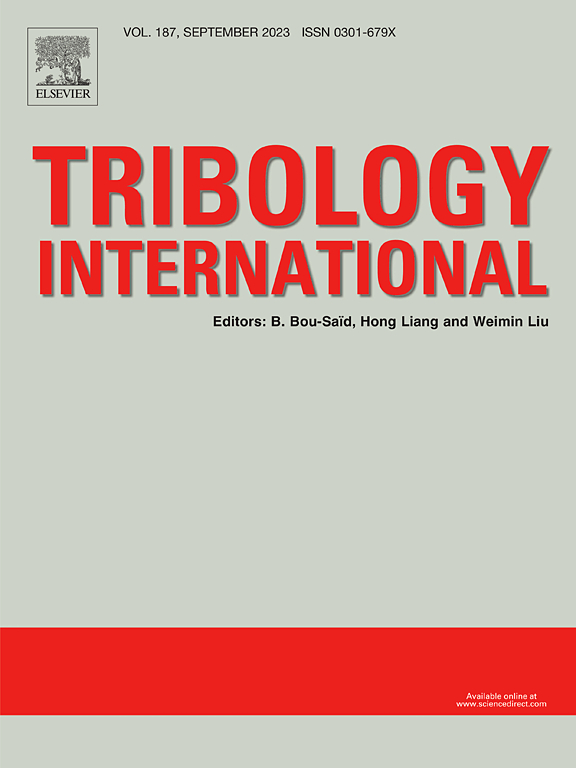Experimental study on the cavitation erosion resistance of 17-4PH under the structure of hundred-micron array grooves on the surface
IF 6.1
1区 工程技术
Q1 ENGINEERING, MECHANICAL
引用次数: 0
Abstract
This paper focuses on the cavitation characteristics and damage morphology evolutions of the 17–4PH material with hundreds-micron array grooves on the surface. Based on the ultrasonic cavitation test platform, experimental data were obtained via the mass loss method and fitted with the Logistic equation to derive key parameters, including the nominal incubation period, maximum erosion rate, and stable erosion rate. The results show that samples with groove spacing and width in the hundreds-micron inhibit cavitation damage. Among the samples with four different ratios of groove width to groove spacing (0.8, 0.82, 0.96, 1.75), the cavitation resistance of the material increases with the increase of the ratio. The larger the dimensionless erosion performance parameters, the weaker the anti-cavitation performance. An optimal array groove structure can significantly reduce cavitation damage compared to the polished sample. Especially, the sample with groove width L= 700 μm and groove spacing W= 400 μm exhibits the longest nominal incubation period (25.05 hours) and the minimal cumulative mass loss (10.92 mg) after 50 hours of cavitation, demonstrating the best cavitation resistance. This study can provide a reference for developing new anti-cavitation surface structures in engineering practice.
表面百微米阵列沟槽结构下17-4PH抗空化侵蚀的实验研究
本文主要研究了表面具有百微米阵列凹槽的17-4PH材料的空化特征和损伤形态演变。基于超声空化试验平台,通过质量损失法获得实验数据,并拟合Logistic方程,推导出标称孵育期、最大侵蚀速率、稳定侵蚀速率等关键参数。结果表明,沟槽间距和宽度在数百微米范围内的样品可以抑制空化损伤。在槽宽与槽距之比为0.8、0.82、0.96、1.75的样品中,材料的空化阻力随槽宽与槽距之比的增大而增大。无量纲侵蚀性能参数越大,抗空化性能越弱。与抛光样品相比,优化的阵列凹槽结构可以显著减少空化损伤。其中,槽宽L= 700 μm、槽间距W= 400 μm的空化时间最长(25.05 h),累积质量损失最小(10.92 mg),空化50 h后的抗空化性能最好。该研究可为工程实践中开发新型抗空化表面结构提供参考。
本文章由计算机程序翻译,如有差异,请以英文原文为准。
求助全文
约1分钟内获得全文
求助全文
来源期刊

Tribology International
工程技术-工程:机械
CiteScore
10.10
自引率
16.10%
发文量
627
审稿时长
35 days
期刊介绍:
Tribology is the science of rubbing surfaces and contributes to every facet of our everyday life, from live cell friction to engine lubrication and seismology. As such tribology is truly multidisciplinary and this extraordinary breadth of scientific interest is reflected in the scope of Tribology International.
Tribology International seeks to publish original research papers of the highest scientific quality to provide an archival resource for scientists from all backgrounds. Written contributions are invited reporting experimental and modelling studies both in established areas of tribology and emerging fields. Scientific topics include the physics or chemistry of tribo-surfaces, bio-tribology, surface engineering and materials, contact mechanics, nano-tribology, lubricants and hydrodynamic lubrication.
 求助内容:
求助内容: 应助结果提醒方式:
应助结果提醒方式:


